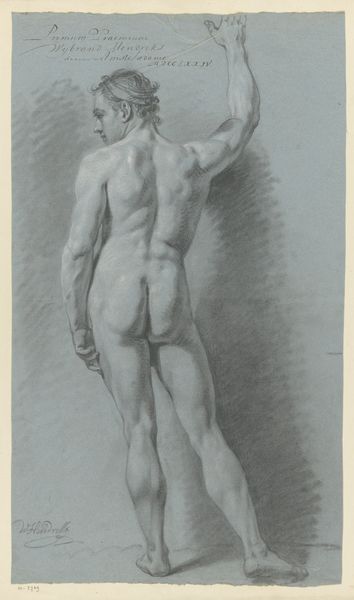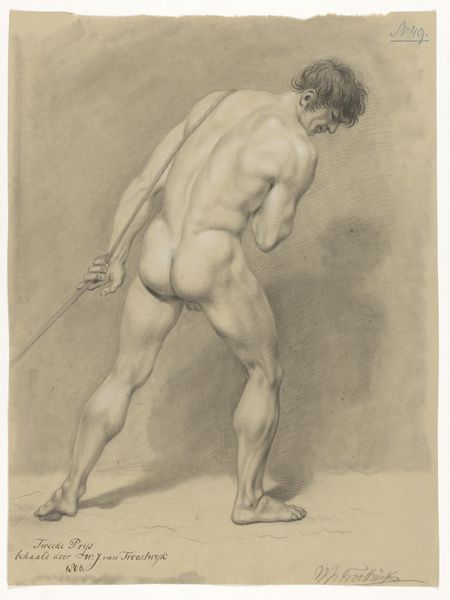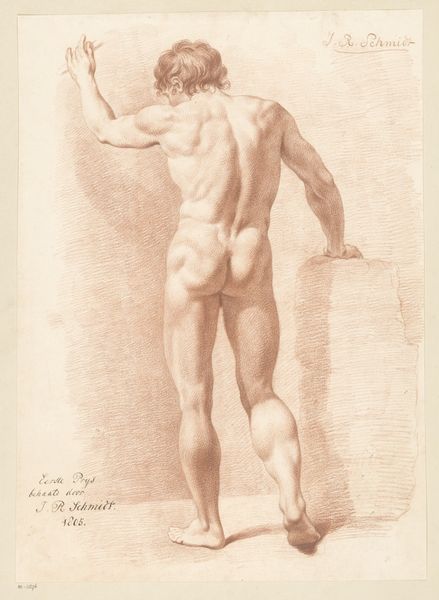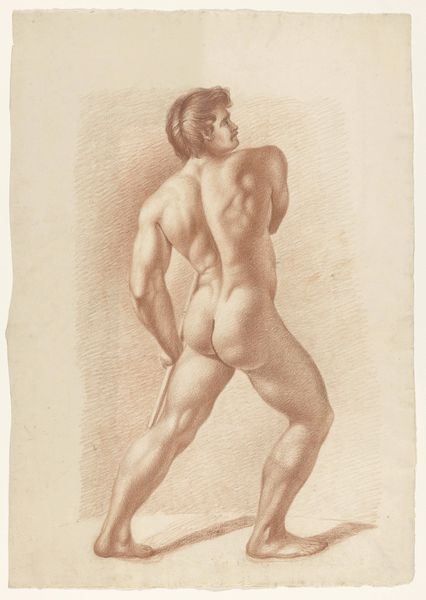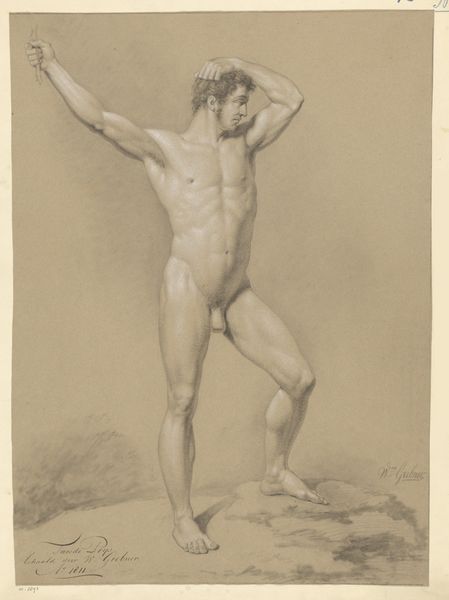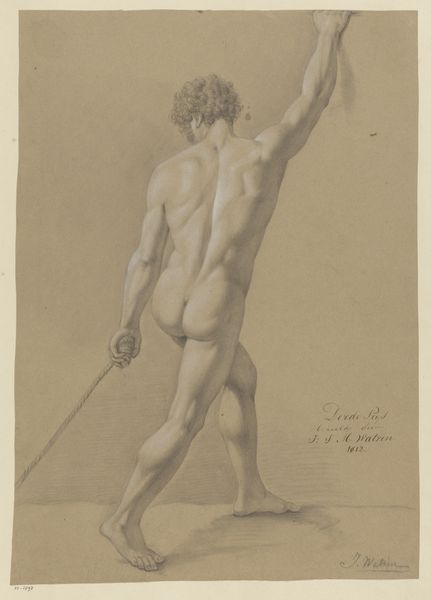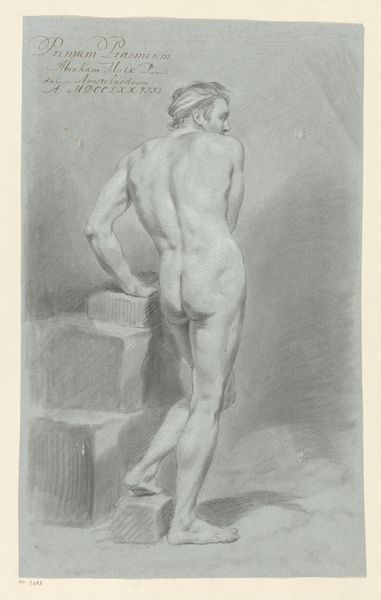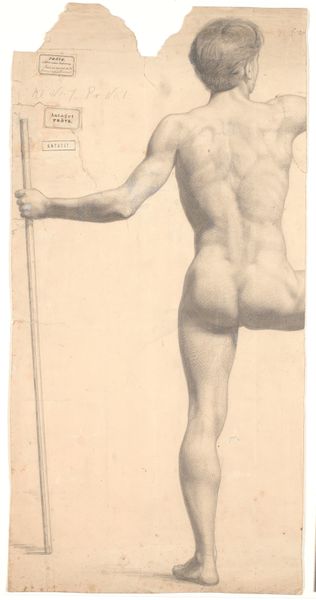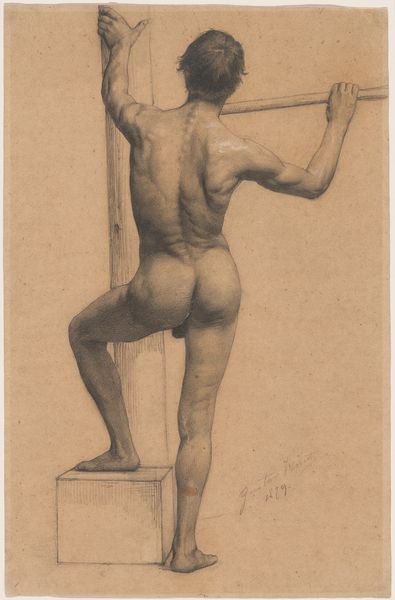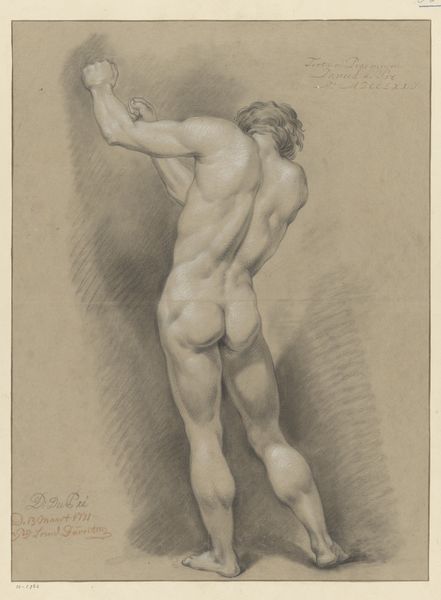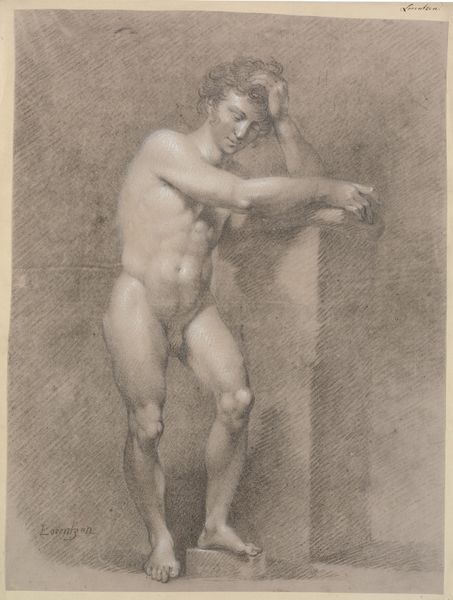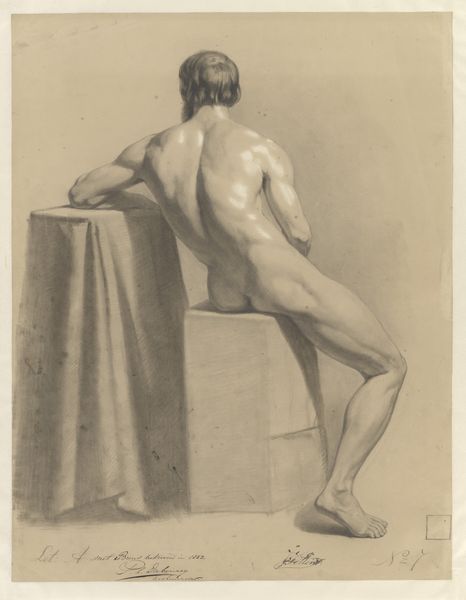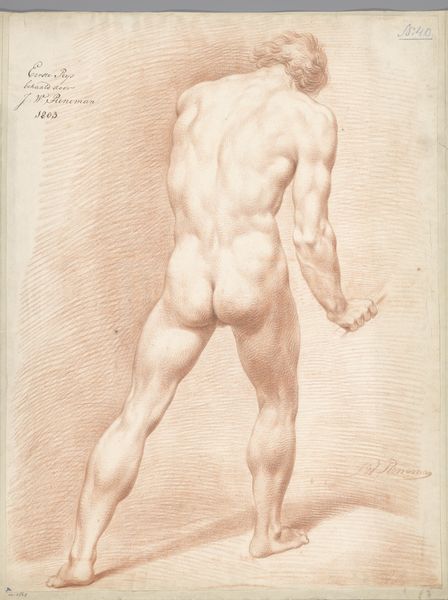
drawing, pencil, charcoal
#
drawing
#
charcoal drawing
#
figuration
#
form
#
charcoal art
#
pencil drawing
#
pencil
#
line
#
charcoal
#
history-painting
#
academic-art
#
nude
#
realism
Dimensions: height 548 mm, width 310 mm
Copyright: Rijks Museum: Open Domain
Editor: So, this is "Standing Male Nude, Seen from Behind," created around 1826 by A. Waterloo. It’s a charcoal and pencil drawing. I’m immediately struck by the intensity of the musculature; it feels almost sculptural. What's your take? Curator: The raw strength, right? I feel it too. Waterloo has rendered this figure with such tangible weight. I almost feel the pressure of those muscles on his skeleton! It reminds me of early anatomical studies, a kind of deep dive into understanding the body's architecture. Do you see how the light falls? Editor: Yes, it's interesting! It defines the form so meticulously, like a study. Curator: Exactly! Almost forensic. I find myself wondering what sort of character inhabits this body. Is he a worker? A gladiator? The drawing hints at something classical but remains so grounded in its realism. The tension in his back... is it exertion or defiance? Editor: Defiance, maybe? There's a latent power, even from this back view. It is as if he has seen a life, a burden. But I suppose that reading isn’t really supported by any background or setting? Curator: True. That’s my imagination wandering again. We only have the man himself. I’d love to know what Waterloo intended. Still, it's exciting when a piece lets you weave your own narrative. I now find myself making one up! Editor: I hadn't considered how the absence of context invites the viewer to fill in the gaps. That is, to a certain degree, inspiring. Thank you. Curator: My pleasure. Art that stays with you, nudges you, invites curiosity…that's what I'm living for!
Comments
No comments
Be the first to comment and join the conversation on the ultimate creative platform.
